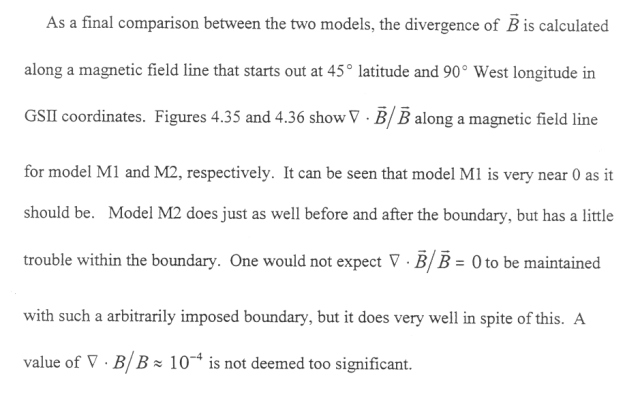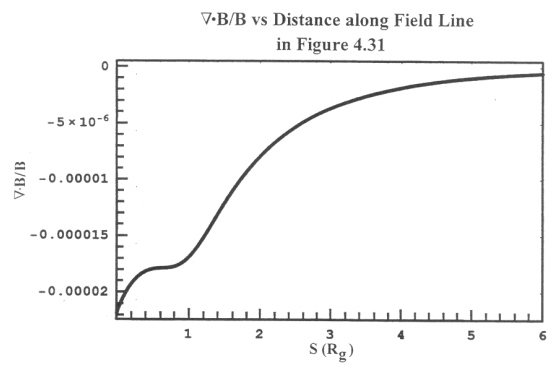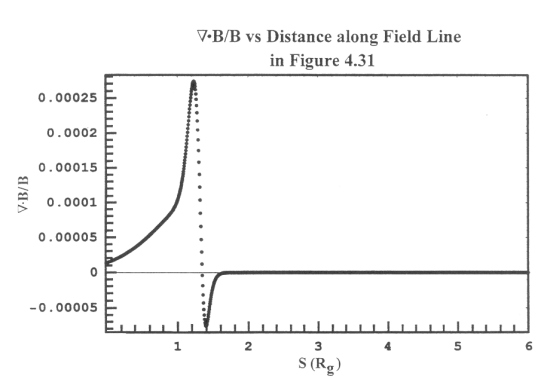Investigation of the Magnetosphere of Ganymede with Galileo's Energetic Particle Detector
Ph.D. dissertation by Shawn M. Stone, University of Kansas,
1999.
Copyright 1999 by Shawn M. Stone. Used with permission.
4.9 The Divergence of Magnetic Field in Models M1 and M2

Figure 4.35 The divergence of a magnetic field line starting from 45º latitude and 90º West longitude in a GSII coordinate system for model M1. The distance scale chosen to implement the derivatives was 100 km.

Figure 4.36 The divergence of the magnetic field along the field line presented in figure 4.31 for model M2. The distance scale chosen to implement the derivatives was 100 km.

4.10 Using the EPD Instrument to Check for Aberration of the Plasma Direction
It is possible to use the ion rate data to imply a set of aberration angles from the direction of corotation. This can be done by locating the direction of the maximum rate and the minimum rate in a complete stepping sequence. The ideal case would find these directions to be 180º apart, but due to the fact that the spacecraft is translating and the angular coverage is in discrete steps, these two vectors are only approximations. This procedure produces for G2 (stepping sequence 3-4-5-4-3), during the inbound trajectory outside of the magnetopause and the outbound, the aberration angles in Table 4.11. For G7 this procedure is plagued by a more complete angular coverage of the 4π sphere. This seems contradictory, but the 1-2-3-4-5-6-7-6-5-4-3-2-1 stepping sequence allows for a longer translation range (4 minutes worth), and a greater probability that the maximum and minimum vectors will be less than 180º apart. This procedure yields for G7 the aberration angles in Table 4.11.
Table 4.11 Aberration angles of the corotational plasma flow as ascertained from the look directions of the maximum and minimum rates. The angles α and β are calculated from the orientation of the maximum look direction relative to the theoretical corotation direction in GSII coordinates {0,-1,0}.
| Encounter | Angle between Max and Min |
Aberration angle β |
Aberration angle α |
| G2 inbound | 104º | -49º | 10º |
| G2 outbound | 118º | -23º | 9º |
| G7 inbound | 107º | 70º | 13º |
| G7 outbound | 111º | 33º | 28º |
Next: Chapter 5 The Simulation: Time Reversed Particle Following
Return to dissertation table of contents page.
Return to main
Galileo Table of Contents Page.
Return to Fundamental
Technologies Home Page.
Updated 8/23/19, Cameron Crane
QUICK FACTS
Mission Duration: Galileo was planned to have a mission duration of around 8 years, but was kept in operation for 13 years, 11 months, and 3 days, until it was destroyed in a controlled impact with Jupiter on September 21, 2003.
Destination: Galileo's destination was Jupiter and its moons, which it orbitted for 7 years, 9 months, and 13 days.



